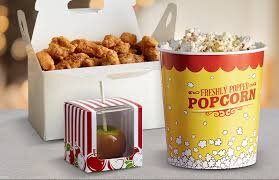
In today’s competitive market, food packaging plays a crucial role in capturing the attention of consumers and influencing their purchasing decisions. The importance of well-designed food packaging cannot be overstated, as it not only protects the product but also serves as a powerful marketing tool. In this article, we will delve into the art of food packaging and explore how businesses can impress their customers through innovative and effective packaging strategies.
Protection And Preservation
At its core, food packaging serves the primary function of protecting the contents from external factors such as moisture, air, light, and contaminants. Proper packaging ensures the shelf life of the product is extended, maintaining its freshness and quality. The choice of materials—whether it’s plastic, glass, metal, or paper—plays a significant role in how well the packaging preserves the food.
Brand Identity And Differentiation
Food packaging is a critical element of a brand’s identity. It offers a visual representation of the brand and helps distinguish products in a crowded marketplace. Effective packaging should reflect the brand’s values, mission, and quality. Unique and eye-catching designs can create a lasting impression, making it easier for customers to remember and choose your product over competitors.
Innovative And Sustainable Materials
Sustainability is at the forefront of consumer concerns, and incorporating eco-friendly materials in food packaging can set a brand apart. Biodegradable plastics, recycled paper, and compostable materials not only reduce environmental impact but also appeal to the growing segment of eco-conscious consumers. Highlighting sustainable practices on the packaging can enhance brand perception and loyalty.
Trends In Food Packaging
Smart Packaging
Technology is revolutionizing food packaging with innovations like smart packaging. This includes features such as QR codes that consumers can scan to get more information about the product, freshness indicators that change color when the product is no longer safe to eat, and temperature-sensitive labels. These advancements not only enhance convenience but also improve food safety.
Minimalist Design
A minimalist approach to packaging design is gaining popularity. Clean lines, simple typography, and a focus on essential elements create a sophisticated and modern look. Minimalist packaging often uses high-quality materials and subtle details to convey luxury and quality, appealing to consumers who appreciate elegance and simplicity.
Personalization
Personalized packaging is another trend that has proven effective in engaging customers. Customized labels with names, messages, or unique designs can create a personal connection between the brand and the consumer. Limited edition packaging for holidays or special events can also drive excitement and encourage purchases.
Trends In Food Packaging
Smart Packaging
Technology is revolutionizing food packaging with innovations like smart packaging. This includes features such as QR codes that consumers can scan to get more information about the product, freshness indicators that change color when the product is no longer safe to eat, and temperature-sensitive labels. These advancements not only enhance convenience but also improve food safety.
Minimalist Design
A minimalist approach to packaging design is gaining popularity. Clean lines, simple typography, and a focus on essential elements create a sophisticated and modern look. Minimalist packaging often uses high-quality materials and subtle details to convey luxury and quality, appealing to consumers who appreciate elegance and simplicity.
Personalization
Personalized packaging is another trend that has proven effective in engaging customers. Customized labels with names, messages, or unique designs can create a personal connection between the brand and the consumer. Limited edition packaging for holidays or special events can also drive excitement and encourage purchases.
Effective Packaging Strategies
Target Audience Analysis
Understanding your target audience is key to designing effective food packaging. Conducting market research to identify consumer preferences, behaviors, and demographics can inform design decisions. Tailoring packaging to meet the specific needs and desires of your target audience can significantly boost its appeal.
Competitor Analysis
Analyzing competitors’ packaging can provide valuable insights into industry standards and trends. Identify what works well and what doesn’t in your competitors’ packaging. This can help you innovate and create packaging that not only meets but exceeds market expectations.
Testing And Feedback
Before finalizing packaging designs, it’s essential to test them with real consumers. Focus groups, surveys, and in-store trials can provide feedback on the packaging’s functionality, attractiveness, and overall appeal. Using this feedback to refine the design can ensure that the final product resonates well with your target audience.
Conclusion
The art of food packaging is a complex and dynamic field that requires careful consideration of various factors to impress customers and stand out in the market. From choosing sustainable materials to designing aesthetically pleasing and informative packaging, every detail matters. By staying abreast of trends and continuously innovating, businesses can create packaging that not only protects their products but also elevates their brand and captivates consumers.




